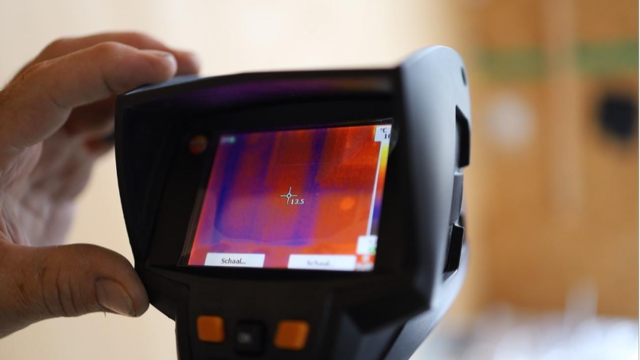
Sometimes we see energy-efficient improvements in other homes and wonder whether ours would be suitable for such upgrades. We’ve all experienced the comfort of stepping into a space with stable, pleasant temperatures—no sudden chills or heatwaves. That kind of thermal comfort is mostly achieved through proper insulation.
So, you might ask yourself: could my house benefit from better insulation, and would it be expensive or difficult to install? One effective and sustainable option to consider is white blowing wool. This material has become a go-to solution for improving home comfort and reducing energy consumption. But first, it’s important to determine if your house is compatible with this type of insulation.
PUREFLOC white blowing wool from URSA is made from high-quality glass wool and consists of 99% of this material, without the need for binders. This makes it a more environmentally friendly choice compared to many traditional insulation products. It’s installed by blowing the wool into small holes drilled into the surfaces to be insulated, allowing the material to fill the empty cavities in walls, ceilings, or floors evenly.
This insulation method is ideal for homes built between the 1950s and 1980s that feature cavity walls. During that period, walls were typically constructed with two layers separated by an air gap, which is where the insulation is injected. This process blocks the transfer of heat, cold, and noise. To confirm if your walls have this structure and are in good condition for insulation, a qualified technician will need to inspect your home.
Cavity walls, ceilings, and attics are all excellent candidates for white blowing wool. Uninsulated attics and hollow ceilings are some of the biggest sources of energy loss in a home. There’s an easy way to tell if your home needs better insulation: if in winter your heating doesn’t seem effective or in summer your top floor feels unbearably hot, adding insulation could greatly improve your indoor comfort. In these cases, white blowing wool can be installed quickly and efficiently, with immediate impact.
There are also other signs your home could benefit from white blowing wool. If your energy bills are higher than expected, if rooms on the upper floors are significantly hotter in the summer or colder in the winter, or if you feel drafts near exterior walls, your home may be losing energy due to insufficient insulation.
However, not all homes are suitable. If your walls are already filled with other insulating materials, or if there are severe damp problems or structural cracks, those issues need to be addressed first. Historical buildings or homes with protected façades may also face legal restrictions on renovations. In these cases, always consult with a professional and review local regulations.
That’s why working with specialists is so important. Professional installers use inspection cameras to examine cavities and ensure they are appropriate for blowing wool. They also use thermal imaging to detect energy loss and precisely target the areas that need improvement. For example, in detached homes, the most critical zones tend to be ceilings and exterior walls, whereas in apartments, the outer-facing walls or those adjacent to unheated spaces—like garages—typically require the most attention.
PUREFLOC white blowing wool is an accessible, sustainable, and highly effective way to improve your home’s insulation. But it’s crucial to confirm your home is suitable for this installation. A trained technician can provide a thorough assessment and help you make the best decision. In the long run, investing in quality insulation won’t just enhance your comfort—it will also add value to your home and make it more energy-efficient all year round.